More like 'container'
Narrow Results By
Decade
- 2020s 35
- 2010s 42
- 2000s 53
- 1990s 75
- 1980s 69
- 1970s 61
- 1960s 51
- 1950s 46
- 1940s 36
- 1930s 31
- 1920s 10
- 1910s 8
- 1900s 8
- 1890s 3
- 1880s 1
- 1870s 1
- 1860s 1
- 1850s 1
- 1840s 1
- 1830s 1
- 1820s 1
- 1810s 1
- 1800s 1
- 1790s 1
- 1780s 1
- 1770s 1
- 1760s 1
- 1750s 1
- 1740s 1
- 1730s 1
- 1720s 1
- 1710s 1
- 1700s 1
- 1690s 1
- 1680s 1
- 1670s 1
- 1660s 1
- 1650s 1
- 1640s 1
- 1630s 1
- 1620s 1
- 1610s 1
- 1600s 1
Subject
- Agriculture 6
- Agriculture - Crops 1
- Agriculture - Farms 7
- Animals - Deer 1
- Archeological Specimen 33
- Armament 18
- Arts 11
- Buildings - Commercial - Grocery Stores 4
- Buildings - Commercial - Restaurants 4
- Buildings - Commercial - Service Stations 1
- Buildings - Industrial - Factories 1
- Buildings - Industrial - Saw Mills 2
basket
https://search.heritageburnaby.ca/link/museumartifact17681
- Repository
- Burnaby Village Museum
- Accession Code
- HV978.2.13
- Description
- Nut-shaped, coiled cedar root basket with cedar root foundation and watch-spring base and lid construction. Hinged lid is attached with leather ties. Covered in beading, where in the decorative elements are laid flat on surface, rather than folded into cedar root stitches as is done with imbrication. Designs are in red and black dyed cherry bark. Interior Salish: Nlaka’pamux
- Object History
- Nut-shaped baskets are identified as one of the oldest types by Haeberlin and Teit (1928: 202-3). They were used for storing berries and were also common work baskets for women, used to hold small tools – awls, thread, shells, trinkets and other odds and ends (202).
- Country Made
- Canada
- Province Made
- British Columbia
- Culture
- Nlaka'pamux
Images
Documents
basket
https://search.heritageburnaby.ca/link/museumartifact27529
- Repository
- Burnaby Village Museum
- Accession Code
- HV974.119.3
- Description
- Rectangular coiled cedar root basket with cedar slat foundation, lid has parallel slat construction and is covered with beaded designs edged by imbrication in canary grass. Basket has a flat lid that is hinged to body with leather ties. A mistake was made in how the design was applied to one end of this basket. This is not common as many weavers would correct this mistake. Completely imbricated walls, beaded design on lid. Coast Salish: Sḵwx̱wú7mesh?
- Object History
- The donor reported that the baskets were traded in the early 1920s for clothes by the donor's mother, who lived in North Vancouver. Her mother told her the "Capilano Indians" used to go door to door with their baskets in North Vancouver.
- Diamonds are considered a star pattern and are common to Sḵwx̱wú7mesh and Nlaka’pamux basketry. The main design resembles a ladder or fence and is uncommon.
- Country Made
- Canada
- Province Made
- British Columbia
- Culture
- Sḵwx̱wú7mesh
Images
Documents
basket
https://search.heritageburnaby.ca/link/museumartifact30051
- Repository
- Burnaby Village Museum
- Accession Code
- HV973.79.1
- Description
- Rectangular coiled cedar root basket with cedar slat foundation. Parallel slat base and lid. Walls of basket flare slightly towards the rim. Basket has a conoid lid – one that fits over top of a flange on the rim of the basket. Rim is inset. Sets of triangular shaped stitches attach base to walls. Base of basket is protected by a foot, one slat high. Grass used for imbricated designs has a flat appearance typical of cattail grass. Black dyed and red cherry bark used for other design elements. Handles missing.
- Object History
- Design variant is uncommon. This may be a zoomorphic design possibly representing an animal head or flying bird.
- Country Made
- Canada
- Province Made
- British Columbia
- School/Style
- Coast Salish
Images
Documents
basket
https://search.heritageburnaby.ca/link/museumartifact50308
- Repository
- Burnaby Village Museum
- Accession Code
- BV006.24.5
- Description
- The basket is round with a lid and has a geometric design in black. Made using the coiled method.
- Object History
- Resembles California and Southwestern style baskets made of willow, dye and grass.
- Country Made
- United States of America
- Province Made
- California
Images
Documents
basket lid
https://search.heritageburnaby.ca/link/museumartifact50309
- Repository
- Burnaby Village Museum
- Accession Code
- BV006.24.6
- Description
- The basket is round with a lid and has a geometric design in black. Made using the coiled method.
- Object History
- Resembles California and Southwestern style baskets made of willow, dye and grass.
Images
Documents
basket with lid
https://search.heritageburnaby.ca/link/museumartifact87630
- Repository
- Burnaby Village Museum
- Accession Code
- BV017.11.3
- Description
- basket with lid; First Nations basket with lid; The basket is round, with two handles opposite each other. The handles are wrapped twine. The wrapping is missing from one handle. The lid has a knob handle in the centre. Basket and lid are decorated with a dark and light spiraling pattern. Had been used for storing knitting.
- Object History
- The basket was acquired by the donor's grandparents, Matilda and Robert William Handel, when they were living in North Vancouver. They were made by one of the local First Nations weavers, name unknown.
- Measurements
- Approx. H: 32 cm Dia.: 34 cm
- Culture
- ʷməθkʷəy̓əm (Musqueam)
Images
Documents
basket with lid
https://search.heritageburnaby.ca/link/museumartifact87633
- Repository
- Burnaby Village Museum
- Accession Code
- BV017.11.4
- Description
- basket with lid; First Nations basket with lid; The basket is round, with a single handle (opposite handle is missing). The lid has a knob handle in the centre. Basket and lid are decorated with a dark and light spiraling pattern. Had been used for storing knitting.
- Object History
- The basket was acquired by the donor's grandparents, Matilda and Robert William Handel, when they were living in North Vancouver. They were made by one of the local First Nations weavers, name unknown.
- Measurements
- Approx. H: 37 cm Dia.: 36 cm
- Culture
- ʷməθkʷəy̓əm (Musqueam)
Images
Documents
berry basket
https://search.heritageburnaby.ca/link/museumartifact27527
- Repository
- Burnaby Village Museum
- Accession Code
- HV974.119.1
- Description
- Trapezoidal shaped, coiled cedar root basket with cedar slat foundation. Finished with an overcast rim with root foundation. Design elements missing from one side of the basket, which is uncommon but has been seen on cradles from the Mount Currie area (Interior Salish: Lil'wat). It was perhaps the side that rests on the wearer's back. Steeply angled sides.
- Coast Salish: Sḵwx̱wú7mesh? Interior Salish: Stl’atl’imx: Lil’wat?
- Object History
- The donor reported that the baskets were traded in the early 1920s for clothes by the donor's mother, who lived in North Vancouver. Her mother told her the "Capilano Indians" used to go door to door with their baskets in North Vancouver.
- Design elements missing from one side of the basket – possibly the side that would have rested against the owner’s back.
- Steeply angled sides keep berries from crushing those at bottom of basket. Work baskets have sides that are more rounded.
- Baskets like these were used with a woven tumpline (wool strap) that was worn against the forehead, while basket was carried on back.
- Country Made
- Canada
- Province Made
- British Columbia
- Culture
- Stl’atl’imx
Images
Documents
comb basket
https://search.heritageburnaby.ca/link/museumartifact29797
- Repository
- Burnaby Village Museum
- Accession Code
- HV973.69.4
- Description
- Rectangular shaped coiled cedar root basket with cedar slat foundations and triangular shaped posterior wall that is higher than the other three. There is a small opening at the top of this wall to allow the basket to be hung.
- Designs are done in black dyed cherry bark. Beaded designs are made by laying decorative materials flat over the surface of the coils, and securing them in place with alternating stitches of the cedar root.
- Coast Salish: Tsleil-Waututh?
- Object History
- A comb basket that was created for sale or trade. The chevron shaped designs are associated with flying geese, and are also used for knitting and weavings. The designs at the top of the basket, above the opening, are called cluster of flies. These designs are common amongst the Coast Salish. There are spaces where the foundation materials show, rows are not even width, the beaded designs are irregular. These are often traits associated with learning.
- Measurements
- Wth. 3 1/2 inches X Lth. 8 1/4 inches
- Country Made
- Canada
- Province Made
- British Columbia
- School/Style
- Coast Salish
- Culture
- Tsleil-Waututh
Images
Documents
storage basket
https://search.heritageburnaby.ca/link/museumartifact12639
- Repository
- Burnaby Village Museum
- Accession Code
- BV985.4184.1
- Description
- Tub shaped coiled cedar root basket with cedar root foundation and overcast rim. Walls of basket flare slightly towards rim. Imbricated with designs in red cherry bark and grass. Design is known as cluster of flies. The foot on the bottom of the basket, made from two extra rows of coiling, is a feature that protects the base of the basket from wear and tear. White beading on the foot. Interior Salish: Nlaka’pamux: Spuzzum possibly
- Object History
- White beading on the foot of the basket is said to be a feature typical of Spuzzum. This was reported by basket makers from that community during collections research conducted at MOA to Sharon Fortney and Bill Mclennan.
- Country Made
- Canada
- Province Made
- British Columbia
- Culture
- Nlaka'pamux
Images
Documents
storage basket
https://search.heritageburnaby.ca/link/museumartifact17680
- Repository
- Burnaby Village Museum
- Accession Code
- HV978.2.12
- Description
- Rectangular coiled cedar root basket with cedar slat foundation. Parallel slat construction for lid, which is covered in beaded designs. Overcast handles attach to the front and back of basket at both ends. Conoid lid fits overtop of the basket, rather than lying flat. Basket body is completely imbricated with canary grass, black-dyed and red cherry bark. This amount of decoration more common on older pieces and was used to protect the surface of the basket. Leather hinges attach lid to body of basket and there are leather ties at front on lid and body of basket. Possible ladder design. Interior Salish: Nlaka’pamux
- Country Made
- Canada
- Province Made
- British Columbia
- Culture
- Nlaka'pamux
Images
Documents
tray
https://search.heritageburnaby.ca/link/museumartifact87627
- Repository
- Burnaby Village Museum
- Accession Code
- BV017.12.1
- Description
- tray; a First Nations made, basketry tray; low sides and two raised handles opposite each other; decorative star or flower pattern woven into the bottom in varying shades of brown; multiple areas of loss around outer sides of rim.
- Object History
- The tray and two baskets (see BV017.11.3 and BV017.11.4) were acquired by the donor's grandparents, Matilda and Robert William Handel, when they were living in North Vancouver. They were made by one of the local First Nations weavers, name unknown.
- Measurements
- Approx. Dia.: 43 cm
Images
Documents
work basket
https://search.heritageburnaby.ca/link/museumartifact27528
- Repository
- Burnaby Village Museum
- Accession Code
- HV974.119.2
- Description
- Rectangular coiled cedar root basket with cedar slat foundation and remnants of a loopwork rim. The shiny appearance of this grass suggests it is canary grass. Black dyed and red cherry bark are used for the zigzag designs. Coast Salish: Sḵwx̱wú7mesh?
- Object History
- The donor reported that the baskets were traded in the early 1920s for clothes by the donor's mother, who lived in North Vancouver. Her mother told her the "Capilano Indians" used to go door to door with their baskets in North Vancouver.
- Zig zags are sometimes referred to as lightening or snake tracks.
- Country Made
- Canada
- Province Made
- British Columbia
- Culture
- Sḵwx̱wú7mesh
Images
Documents
Interview with Howe Lee, 2019
https://search.heritageburnaby.ca/link/museumdescription10266
- Repository
- Burnaby Village Museum
- Date
- February 20, 2019
- Collection/Fonds
- Burnaby Village Museum fonds
- Description Level
- Item
- Physical Description
- 1 sound recording (mp3) (01:18:41 min)
- Scope and Content
- Recording is an interview with Howe Lee conducted by BVM researcher Denise Fong. Mr. Lee describes growing up in Armstrong in the 1930s and 1940s, leaving to attend university, and becoming a teacher in Burnaby. He discusses his community involvement and the creation of the Chinese Canadian Militar…
- Repository
- Burnaby Village Museum
- Collection/Fonds
- Burnaby Village Museum fonds
- Series
- Museum Oral Histories series
- Subseries
- Chinese Canadians in Burnaby subseries
- Description Level
- Item
- Physical Description
- 1 sound recording (mp3) (01:18:41 min)
- Material Details
- Interviewer: Denise Fong Interviewee: Howe Lee Location of Interview: Burnaby Village Museum Interview Date: February 20, 2019 Total Number of tracks: 1 Total Length of all Tracks: 1:18:41
- Scope and Content
- Recording is an interview with Howe Lee conducted by BVM researcher Denise Fong. Mr. Lee describes growing up in Armstrong in the 1930s and 1940s, leaving to attend university, and becoming a teacher in Burnaby. He discusses his community involvement and the creation of the Chinese Canadian Military Museum Society. 00:00 – 20:39: Mr. Lee describes his family’s origins in China. Denise shows him a photograph of Armstrong and he uses it to show the location of his family’s property and other landmarks. He talks about his family’s life in Armstrong, their farm’s place in the Chinese produce supply system of the time, and the presence and life of Chinese people in British Columbia generally. Mr. Lee also relates how the Interior Vegetable Marketing Board’s policies affected the farm and his future prospects. 20:39 – 32:40: This portion of the recording pertains to Mr. Lee’s involvement with the Chinese Cultural Centre and how he developed an interest in commemorating and honouring Chinese pioneers and military veterans. He recalls his education in Armstrong and at U.B.C. and the community of Chinese students which first drew him to Vancouver’s Chinatown. 32:40 – 51:24: Mr. Lee describes his family and the Chinese community in Armstrong, using the photo to show the locations of the businesses. He recalls his involvement with youth groups, particularly the Cadets, and with local sports, noting that he faced very little discrimination there. Denise asks about the family’s farm and Mr. Lee identifies the family’s house in a drawing. 51:24 – 1:02:18: This portion of the recording pertains to Mr. Lee’s education and career. He describes his enjoyment of being a leader in various groups and activities, and his interest in the local Chinese community. He explains the structure and operation of the cadets and shares his perspective of its value in leadership training. 1:02:18 – 1:18:46: Mr. Lee recalls how he became involved with veterans and with the Chinese Cultural Centre in Vancouver. He talks about bringing his parents to Burnaby to live. Mr. Lee describes how he persuaded some veterans to reorganize their group under the Army, Navy & Air Force Veterans in Canada. He discusses the importance of documenting and passing on the legacy of the Chinese veterans’ contribution and tells how he convinced some of them to create The Chinese Canadian Military Museum Society. Mr. Lee relates how his involvement with the local society led to involvement with a national group.
- History
- Howe Lee has worked in education, business, military and within the community. He has taught Science and Mathematics in several Burnaby Secondary Schools and was head of the Science Department and Edmonds Secondary School. Lee was appointed Honorary Colonel in 2012. He has been active within the Chinese-Canadian community including working with the Chinese Canadian Military Museum, Vancouver Chinatown Memorial Square, Asian Heriage Month Society and the Chinatown Revitalization. Interviewer biography: Denise Fong is a historical researcher at Burnaby Village Museum. She has degrees in Anthropology (BA) and Archaeology (MA), and is completing her doctoral degree at UBC in Interdisciplinary Studies. Her primary research interests are in Chinese Canadian history and critical heritage studies. She is the co-curator of BVM’s “Across the Pacific” exhibition, and the Museum of Vancouver’s “A Seat at the Table – Chinese Immigration and British Columbia”.
- Creator
- Burnaby Village Museum
- Responsibility
- Fong, Denise
- Accession Code
- BV019.15.1
- Access Restriction
- No restrictions
- Reproduction Restriction
- No known restrictions
- Date
- February 20, 2019
- Media Type
- Sound Recording
Audio Tracks
Interview with Howe Lee, 2019, February 20, 2019
Interview with Howe Lee, 2019, February 20, 2019
https://search.heritageburnaby.ca/media/hpo/_Data/_BVM_Sound_Recordings/Oral_Histories/2019_0015_0001_001.mp3Interview with Ken Yip May 9, 2005 - Track 3
https://search.heritageburnaby.ca/link/museumdescription4533
- Repository
- Burnaby Village Museum
- Date
- 1950s & 1960s (interview content), interviewed May 9, 2005
- Collection/Fonds
- Burnaby Village Museum fonds
- Description Level
- Item
- Physical Description
- 1 sound recording (mp3) (0:06:07 min)
- Scope and Content
- Track 3: This portion of the recording continues with Ken’s band activities, and then pertains to the games Ken played with his brother and friends. Ken discusses how the school band’s repertoire and performances were designed to complement the school’s events throughout the year. He describes the …
- Repository
- Burnaby Village Museum
- Collection/Fonds
- Burnaby Village Museum fonds
- Series
- Museum Oral Histories series
- Subseries
- Growing Up in Burnaby subseries
- Description Level
- Item
- Physical Description
- 1 sound recording (mp3) (0:06:07 min)
- Material Details
- Interviewer: Tom Gooden Interviewee: Ken Yip Date of interview: May 9, 2005 Total Number of Tracks: 5 Total length of all Tracks: 0:62:00
- Scope and Content
- Track 3: This portion of the recording continues with Ken’s band activities, and then pertains to the games Ken played with his brother and friends. Ken discusses how the school band’s repertoire and performances were designed to complement the school’s events throughout the year. He describes the concert the band was invited to play on the lawn of Ceperley House on their return from Expo 67. Ken recalls the games he and his brother played, and the two neighbor boys they played with. He describes playing on the North American Peat property adjacent to theirs, in the peat trenches and in the bush. He talks of roaming as far as New Westminster and the Fraser River.
- History
- Recording of an interview with Ken Yip recording by Tom Gooden on May 9, 2005. This recording was completed for an exhibit, Growing Up in Burnaby, for the Burnaby Village Museum. Major themes discussed are growing up in Burnaby in the 1950s and 60s.
- Creator
- Burnaby Village Museum
- Names
- Yip, Ken
- Accession Code
- BV017.45.5
- Access Restriction
- No restrictions
- Reproduction Restriction
- May be restricted by third party rights
- Date
- 1950s & 1960s (interview content), interviewed May 9, 2005
- Media Type
- Sound Recording
Audio Tracks
Interview with Ken Yip May 9, 2005 - Track 3, 1950s & 1960s (interview content), interviewed May 9, 2005
Interview with Ken Yip May 9, 2005 - Track 3, 1950s & 1960s (interview content), interviewed May 9, 2005
https://search.heritageburnaby.ca/media/hpo/_Data/_BVM_Sound_Recordings/Oral_Histories/2017_0045_0005_003.mp3A Family Farm
https://search.heritageburnaby.ca/link/museumdescription14268
- Repository
- Burnaby Village Museum
- Date
- 2020
- Collection/Fonds
- Burnaby Village Museum fonds
- Description Level
- Item
- Physical Description
- 1 sound recording (mp3) (00:13:57 min)
- Scope and Content
- Item consists of a recording of part one in a series of three “Back to the Roots” podcasts about the history of Chinese-Canadian farming in Burnaby and the lower mainland. Part one is titled “A Family Farm”. The podcasts were created by students Rose Wu and Wei Yan Yeong from the Faculty of Land an…
- Repository
- Burnaby Village Museum
- Collection/Fonds
- Burnaby Village Museum fonds
- Series
- UBC Partnership series
- Description Level
- Item
- Physical Description
- 1 sound recording (mp3) (00:13:57 min)
- Material Details
- Podcasts hosts: Rose Wu; Wei Yan Yeong Persons from recorded extracts: Denise Fong; Josephine Chow Music: prod. riddiman Podcast Date: October 2020 Total Number of tracks: 1 Total Length of all tracks: 00:13:57 min Photograph info: Store front of Way Sang Yuen Wat Kee & Co in Victoria, B.C., 1975. BV017.7.191
- Scope and Content
- Item consists of a recording of part one in a series of three “Back to the Roots” podcasts about the history of Chinese-Canadian farming in Burnaby and the lower mainland. Part one is titled “A Family Farm”. The podcasts were created by students Rose Wu and Wei Yan Yeong from the Faculty of Land and Food Systems at the University of British Columbia Faculty and while student interns at Burnaby Village Museum. In this series the students connect their knowledge of food systems to their shared Chinese heritage in order to discover how Chinese Canadian history is rooted in their local food systems. 00:00-02:21 The podcast opens with Wei Yan Yeong and Rose Wu introducing themselves and their topic- the Chinese Canadian experience in Burnaby and the people who have made important contributions to the city’s development. “A Family Farm” talks about Chinese-owned businesses which are family run. “The family-oriented nature of Chinese-owned businesses also extend to many of the early (and current) Chinese-owned farms in the Burnaby Big Bend area. When Chinese men first began farming in BC in the 1860s, a lot of them worked as labourers because they weren’t allowed to own land. After World War II many of these farmers were allowed to purchase lots, thanks to the Veterans Land Grant. These grants allowed returning veterans to purchase small parcels of land with government loans. Eventually, these men would start families on the farm, and many Chinese-owned farms became family-operated businesses where every member, male, female, child, and extended relatives were enlisted to work the grounds. And it was hard work, often from dawn to dusk, 6-7 days a week.” 02:23 – 07:50 This portion includes excerpts from Oral History interview with Josephine Chow (nee Hong) of Hop On Farms in the Burnaby Big Bend area. The interview was conducted by Burnaby Village Museum researcher Denise Fong. Josephine recalls growing up on the family farm with her six siblings. She tells of how the family pulled together money to purchase twelve acres along Marine Drive in 1951, her family’s background, daily life on the farm , responsibilities on the farm for her and her siblings and of how her mother had to balance working on the farm and providing for a family of ten to twelve people. 07:51 – 08:10 In this portion, hosts comment and reflect on their own experiences. “While it’s likely that a lot of this was done out of necessity and not being able to afford additional paid labourers, having grown up in Chinese households ourselves, we can definitely understand the rationale for these family-operated businesses and how it connects back to the Chinese understanding of family and kinship.” 08:11 – 09:06 In this portion, Rose and Wei provide information on the roots of the Chinese character for family “jia” in mandarin or “gah” in Cantonese. They explain that the term family is composed of two parts: the upper element is like a roof, symbolizing shelter, and the bottom part represents a pig which symbolizes food, whereby the Chinese character for family represents that of a farm. They provide a quote from the writings of Francois de Martin-Donos “In ancient China, the farm is an enterprise, a shelter that insures one food and work. The farm is a place to rely on, but in return, needs to be maintained, including a set of responsibilities. In other words, “family” is the insurance of a stable life.” 09:07 – 10:27 In this portion, the hosts speak about how traditional Chinese thought is heavily influenced by the teachings of Confucius and Confucius philosophy. They explain how Confucius emphasized five sets of human relationships that form the basis for society: ruler and minister, husband and wife, parents and child, sibling and sibling, friend and friend. Of these five, three are familial relationships also known as Filial piety – the respect and care for one’s familial superiors (such as parents, elders, and ancestors). They speak of how this is one of Confucianism’s main teachings and in this respect caring for family members is seen as a moral obligation. In China housing arrangements are in the form of siheyuan”s — a type of residence that featured a courtyard surrounded on all four sides with buildings. These traditionally housed one large extended family if they were wealthy enough. 10:28 – 13:08 In this portion, hosts provide further information on Josephine Chow’s family experience working and living on the “Hop On” family farm through the decades. An excerpt from the interview with Josephine Chow conducted by Denise Fong is included. In this excerpt, Josephine reflects on her past experiences on the farm and her present day experiences of her siblings running the farm. 13:09 -13:56 Final summary, credits and acknowledgements.
- History
- Podcast hosts, Rose Wu and Wei Yan Yeong are University of British Columbia students in the Faculty of Land and Food Systems and student interns at Burnaby Village Museum.
- Creator
- Burnaby Village Museum
- Subjects
- Persons - Chinese Canadians
- Agriculture - Farms
- Agriculture
- Gardens - Market Gardens
- Social Issues - Discrimination
- Social Issues - Racism
- Names
- Fong, Denise
- Responsibility
- Wu, Rose
- Yeong, Wei Yan
- Geographic Access
- Marine Drive
- Accession Code
- BV020.28.3
- Access Restriction
- No restrictions
- Reproduction Restriction
- No known restrictions
- Date
- 2020
- Media Type
- Sound Recording
- Historic Neighbourhood
- Fraser Arm (Historic Neighbourhood)
- Planning Study Area
- Big Bend Area
- Related Material
- BV020.28.4; BV020.28.5
- Notes
- Title based contents of sound recording
- See also Interview with Josephine Chow by Denise Fong February 7, 2020 - BV020.6.1
- Compilation of Research Resources used by authors Rose Wu and Wei Yan Yeong include:
- Why is family important in China? https://medium.com/@francois_dmd/why-is-family-so-important-in-china-1617b13a67
- Burnaby Village Museum - Interview with Josephine Chow by Denise Fong Feb. 7, 2020. BV020.6.1 https://search.heritageburnaby.ca/permalink/museumsoundrecording12337
- Covered Roots: The History of Vancouver's Chinese Farms https://www.youtube.com/watch?v=M4WHS2Uf3JU
- Burnaby Village Museum Shares Chinese-Canadian Farming History This Summer https://westcoastfood.ca/burnaby-village-museum-shares-chinese-canadian-farming-history-this-summer/
- Chinese Market Gardeners in the City of Burnaby BC Continue to Practice Urban Agriculture https://cityfarmer.info/chinese-market-gardeners-in-the-city-of-burnaby-bc-continue-to-practice-urban-agriculture/
- Chinese Market Gardening in BC https://www.bcfoodhistory.ca/chinese-market-gardening-bc/
Images
Audio Tracks
A Family Farm, 2020
Chinese Herbalist Shops and TCM
https://search.heritageburnaby.ca/link/museumdescription14274
- Repository
- Burnaby Village Museum
- Date
- 2020
- Collection/Fonds
- Burnaby Village Museum fonds
- Description Level
- Item
- Physical Description
- 1 sound recording (mp3) (00:16:19 min)
- Scope and Content
- Item consists of a recording of part three in a series of three “Back to the Roots” podcasts where the hosts Rose Wu and Wei Yan Yeong, "Dig up the roots of the past to unearth the foundations of the Chinese Canadian experience in Burnaby." This episode three is titled "Chinese Herbalist Shops and …
- Repository
- Burnaby Village Museum
- Collection/Fonds
- Burnaby Village Museum fonds
- Series
- UBC Partnership series
- Description Level
- Item
- Physical Description
- 1 sound recording (mp3) (00:16:19 min)
- Material Details
- Podcasts hosts: Rose Wu; Wei Yan Yeong Persons from recorded extracts: Denise Fong; Josephine Chow; Julie Lee Guest: Dr. John Yang Podcast Date: October 2020 Total Number of tracks: 1 Total Length of all tracks: 00:16:19 min Photograph info: Store front of Way Sang Yuen Wat Kee & Co in Victoria, B.C., 1975. BV017.7.191
- Scope and Content
- Item consists of a recording of part three in a series of three “Back to the Roots” podcasts where the hosts Rose Wu and Wei Yan Yeong, "Dig up the roots of the past to unearth the foundations of the Chinese Canadian experience in Burnaby." This episode three is titled "Chinese Herbalist Shops and TCM". The podcasts were created by students Rose Wu and Wei Yan Yeong from the Faculty of Land and Food Systems at the University of British Columbia Faculty and while student interns at Burnaby Village Museum. In this series the students connect their knowledge of food systems to their shared Chinese heritage in order to discover how Chinese Canadian history is rooted in their local food systems. 00:00 - 01:34 Podcast opens with an introduction to this episode in the podcast series. 01:35 - 03:43 This portion of the podcast consists of segments of pre-recorded interviews between Denise Fong and Chinese-Canadians Julie Lee and Josephine Chow who grew up in Burnaby. Josephine and Jule recall visiting herbalist shops in Vancouver's Chinatown during the nineteen fifties and sixties. Due to the lack of herbalist shops in the Burnaby community during that time, it was common for a Chinese farming family to travel to Vancouver’s Chinatown in order to obtain herbal prescriptions or dried goods. Julie speaks briefly about what the type of Traditional Chinese medical care and advice her mother and family received. Josephine Chow tells of a female Chinese doctor from Vancouver, Madeline Chung who was responsible for delivering a lot of Chinese babies including Josephine and describes how her mother would take members of the family to the herbalist in Vancouver's Chinatown. 03:44 - 04:44 In this portion, the hosts tell of how aside from its medicinal purposes, herbalist shops also have a major socio-cultural significance to the Chinese community. The hosts describe the traditional layout of Chinese herblist shops, with a table set up for the game Ma Jong in the back and a seating area where customers could chat while waiting and be served tea. The hosts provide an example of the "Way Sang Yuen Wat Kee & Co." herbalist shop in Victoria that was open between 1905 and 1967 and of how the shop and contents are now part of a permanent exhibit at the Burnaby Village Museum. 04:45 - 09:21 In this portion, the hosts describe "Traditional Chinese Medicine" also known as "TCM". In order to better understand the importance of TCM in Chinese culture, and specifically to Chinese-Canadian immigrants, the hosts interview Dr John Yang, the chairperson and program director of Kwantlen Polytechnic University's TCM program. Holding a PHD in TCM before migrating with his family to Canada, Dr Yang came here 30 years ago and immediately started his journey as a TCM practitioner at his home basement in Burnaby. Dr. Yang tells of how he worked with the lobbying group, ATCMA (The British Columbia Association of Traditional Chinese Medicine and Acupuncture Practitioners) to help legitimize TCM as a recognized form of medical health care. In 1996, the Canadian government finally approved the legitimization of TCM in Canada, where one is required to take a licensing exam before they’re allowed to start their practices in Canada. 09:22 - 15:17 In this portion of the podcast, Dr. Yang and hosts describe how Traditional Chinese Medicine and treatments differ from Western medicine, how TCM is a way of life and regularly incorporated into recipes and diets, the lack of social acceptance and the import of Chinese medicinal herbs and misconceptions. 15:18 - 16:19 Conclusion, credits and acknowledgements.
- History
- Podcast hosts, Rose Wu and Wei Yan Yeong are University of British Columbia students in the Faculty of Land and Food Systems and student interns at Burnaby Village Museum.
- Creator
- Burnaby Village Museum
- Subjects
- Persons - Chinese Canadians
- Social Issues - Discrimination
- Social Issues - Racism
- Public Services - Health Services
- Names
- Lee, Julie Cho Chan
- Chow, Josephine
- Fong, Denise
- Yang, Dr. John
- Way Sang Yuen Wat Kee & Company
- Burnaby Village Museum
- Responsibility
- Wu, Rose
- Yeong, Wei Yan
- Accession Code
- BV020.28.5
- Access Restriction
- No restrictions
- Reproduction Restriction
- No known restrictions
- Date
- 2020
- Media Type
- Sound Recording
- Related Material
- BV020.28.3; BV020.28.4
- Notes
- Title based contents of sound recording
- See also Interview with Josephine Chow by Denise Fong February 7, 2020 - BV020.6.1; Interview with Julie Lee by Denise Fong February 6, 2020 - BV020.6.2
- For associated video recording of research interview with Dr. John Yang - see BV020.28.1
- Compilation of Research Resources used by authors Rose Wu and Wei Yan Yeong include:
- B.C. to recognize doctors of Chinese medicine: https://www.cbc.ca/news/canada/b-c-to-recognize-doctors-of-chinese-medicine-1.396806
- B.C. takes steps to legitimize traditional Chinese medicine: https://www.theglobeandmail.com/news/national/bc-takes-steps-to-legitimize-traditional-chinese-medicine/article18428851/
- Traditional Chinese medicine moves into the mainstream https://www.straight.com/life/415386/traditional-chinese-medicine-moves-mainstream
- Burnaby Village Museum - Interview with Josephine Chow by Denise Fong Feb. 7, 2020. BV020.6.1 https://search.heritageburnaby.ca/permalink/museumsoundrecording12337
- Burnaby Village Museum, Interview with Julie Lee by Denise Fong Feb. 6, 2020. BV020.6.2 https://search.heritageburnaby.ca/permalink/museumsoundrecording12338
Images
Audio Tracks
Chinese Herbalist Shops and TCM, 2020
Chinese Herbalist Shops and TCM, 2020
https://search.heritageburnaby.ca/media/hpo/_Data/_BVM_Sound_Recordings/Sound_Recordings/2020_0028_0005_001.mp3Interview with Denise Fong by Rose Wu and Wei Yan Yeong
https://search.heritageburnaby.ca/link/museumdescription14276
- Repository
- Burnaby Village Museum
- Date
- 2020
- Collection/Fonds
- Burnaby Village Museum fonds
- Description Level
- Item
- Physical Description
- 1 sound recording (mp3) (00:60:38 min.)
- Scope and Content
- Item consists of an audio recording of a Zoom interview with Denise Fong conducted by Rose Wu and Wei Yan Yeong, in the Faculty of Land and Food Systems at UBC. The interview was conducted with Denise Fong as part of the students' research for their podcast "Where is your food from?". This podcast…
- Repository
- Burnaby Village Museum
- Collection/Fonds
- Burnaby Village Museum fonds
- Series
- UBC Partnership series
- Description Level
- Item
- Physical Description
- 1 sound recording (mp3) (00:60:38 min.)
- Material Details
- Interviewers: Rose Wu; Wei Yan Yeong Interviewee: Denise Fong Interview Date: September 2020 Total Number of tracks: 1 Total Length of all tracks: 00:60:38 Recording device: Zoom video communication platform Photograph info: Store front of Way Sang Yuen Wat Kee & Co in Victoria, B.C., 1975. BV017.7.191
- Scope and Content
- Item consists of an audio recording of a Zoom interview with Denise Fong conducted by Rose Wu and Wei Yan Yeong, in the Faculty of Land and Food Systems at UBC. The interview was conducted with Denise Fong as part of the students' research for their podcast "Where is your food from?". This podcast was part two in a series of three "Back to the Roots" podcasts about the history of Chinese-Canadian farming in Burnaby and the lower mainland. In this series the students connected their knowledge of food systems to their shared Chinese heritage in order to discover how Chinese Canadian history is rooted in their local food systems. "Where is your food from?" explores contemporary versus historical alternative food movements and how early Chinese farmers in the lower mainland had to be creative in their business tactics in order to survive in a local food system that discriminated against their race. 00:00 - 4:51 Denise Fong introduces herself and provides a summary of the work that she has done while working as a researcher on the Chinese Canadian History Research project for the Burnaby Village Museum. Denise explains how much of her research has focused on the history of Chinese Canadian market gardeners and green grocers and their presence in Burnaby. Denise tells of how many Chinese immigrants found it hard to find work due to racial discrimination which led many Chinese men to work in agriculture and farming. Her research has shown that many of the Chinese farms were located in the Big Bend area of Burnaby. 04:52 – 08:24 In this segment, Denise elaborates on the “truck” or “market” farming industry for Chinese farmers in Burnaby. Denise explains how “truck” farming was a mode for distributing produce from Chinese farms and some of the challenges the Chinese farmers faced. 08:25 – 14:10 In this segment Denise talks about peddling as another mode to distribute farm produce and how this was often dominated by Chinese Canadians since they were restricted from accessing other jobs. Denise explains how the Chinese peddlers would have their own routes with customers who depended on them to bring the produce to them. Denise provides an example of racial discrimination whereby a Burnaby Bylaw prevented people of Chinese descent from working for the city. 14:11 – 22: 39 In this segment, Denise describes how in the 1950s and 1960s, produce distribution networks for Chinese Canadian farmers in Burnaby expanded to larger stores and wholesalers including Woodward’s, Safeway in Burnaby, MacDonald’s Consolidated and Kelly Douglas. Denise provides specific examples of Burnaby families and tells the story of Chinese Canadian Cecil Lee, a produce buyer for Kelly Douglas. In the mid 1970s Lee, was asked to oversee the import of Chinese mandarin oranges into Canada and was responsible for the design of a new cardboard box to replace the wooden crates that held the mandarin oranges. 22:40 – 33:28 In this segment, Denise provides information on Chinese farming methods and practices that she gathered through her research. Information gathered from interviews, research papers and an article in Harrowsmith magazine suggest that many of the Big Bend farms in Burnaby relied on crop rotation, companion planting and intercropping along with traditional organic fertilizers that were available. Denise also tells of how Chinese farmers often relied on traditional methods that they brought from Southern China including the creation of raised beds to avoid damage due to flooding. Wei Yan comments that many of these traditional methods are being reintroduced as a new sustainable way of farming. Research done by Wei Yan found that when chemical fertilizers were introduced informational brochures included Chinese translations. 33:29 – 38:30 In this segment Rose and Wei Yan speak to Denise about the cultural demographic of farmers in the Big Bend area of Burnaby and what types of crops were grown. Denise comments that to her knowledge there were mostly Chinese farmers in this area but there were some European farmers as well. Produce that was grown on the farms was mostly market driven by the local consumers and it wasn’t until the 1970s that there was a bigger demand to grow Chinese vegetables to supply the growing Chinese population. Denise shares personal experience of what she learned after a visit to a local farm and the different methods that the farmer used for growing crops. The three discuss the importance of innovation and adaptability in growing techniques that Chinese farmers have used. 38:31 – 46:23 In this segment, Rose and Wei Yan speak to Denise about the discrimination barriers that Chinese farmers had to face. Denise speaks about discriminatory bylaws and regulations that targeted Chinese farmers including the Peddling tax. She tells of how this tax, persecution to peddlers and restrictions resulted in the emergence of a new industry of Chinese green grocers. Denise names Chinese trade organizations that were formed in response to the social and economic segregation and marginalization that Chinese farmers and retailers faced. Denise references research done by Natalie Gibb and Hannah Wittman from their article “Parallel Alternatives: Chinese-Canadian farmers and the Metro Vancouver local food movement” as well as research by Harry Con and Edgar Wickberg. Denise also provides information that she has gathered from Chinese farmers in Burnaby including the Yip family who were able to purchase land after World War II through the Veterans Land Act and how prior to World War II it was very difficult for Chinese immigrants to purchase land. 46:24 – 1:00:38 In this segment the group discusses how Chinese farmers have adapted in the market garden farm distribution system and the introduction of retail spaces on their farms as part of the new local food movement. Denise, Rose and Wei Yan reflect on how their interview with Denise Fong and research resources will support their podcast series and exhibits at Burnaby Village Museum.
- History
- Interviewer biographies: Rose Wu and Wei Yan Yeong are University of British Columbia students in the Faculty of Land and Food Systems and student interns at Burnaby Village Museum. Interviewee biography: Denise Fong is a historical researcher at Burnaby Village Museum. She has degrees in Anthropology (BA) and Archaeology (MA), and is completing her doctoral degree at UBC in Interdisciplinary Studies. Her primary research interests are in Chinese Canadian history and critical heritage studies. She is the co-curator of the Burnaby Village Museum “Across the Pacific” exhibition, and the Museum of Vancouver’s “A Seat at the Table – Chinese Immigration and British Columbia”.
- Creator
- Burnaby Village Museum
- Subjects
- Persons - Chinese Canadians
- Social Issues - Discrimination
- Social Issues - Racism
- Agriculture
- Agriculture - Crops
- Agriculture - Farms
- Gardens - Market Gardens
- Foods
- Names
- Fong, Denise
- Responsibility
- Wu, Rose
- Yeong, Wei Yan
- Accession Code
- BV020.28.2
- Access Restriction
- No restrictions
- Reproduction Restriction
- No known restrictions
- Date
- 2020
- Media Type
- Sound Recording
- Related Material
- BV020.28.4
- Notes
- Title based on contents of recording
- Item was originally recorded as an mp4 video and converted to an mp3 sound recording for public access on Heritage Burnaby. To access the video recording, contact Burnaby Village Museum.
- For recording of podcast "Where is your food from?" see BV020.28.4
Images
Audio Tracks
Interview with Denise Fong by Rose Wu and Wei Yan Yeong, 2020
Interview with Denise Fong by Rose Wu and Wei Yan Yeong, 2020
https://search.heritageburnaby.ca/media/hpo/_Data/_BVM_Sound_Recordings/Sound_Recordings/2020_0028_0002_002.mp3Interview with Harry Toy, Beverley Babey and Christina Toy
https://search.heritageburnaby.ca/link/museumdescription20285
- Repository
- Burnaby Village Museum
- Date
- [1905-2023] (interview content), interviewed 25 Sep. 2023
- Collection/Fonds
- Burnaby Village Museum fonds
- Description Level
- Item
- Physical Description
- 1 sound recordings (wav) (121min., 14 sec.) + 1 sound recording (mp3) (121 min., 13 sec.)
- Scope and Content
- Item consists of a recording of an oral history interview with Harry Toy, Beverley Babey and Christina Toy conducted by Burnaby Village Museum researcher Denise Fong on September 25, 2023. The interview is divided into four sections: early life of Harry Toy, the Canada Way Food Market, the Fraser M…
- Repository
- Burnaby Village Museum
- Collection/Fonds
- Burnaby Village Museum fonds
- Series
- Museum Oral Histories series
- Subseries
- Many Voices Project Interviews subseries
- Description Level
- Item
- Physical Description
- 1 sound recordings (wav) (121min., 14 sec.) + 1 sound recording (mp3) (121 min., 13 sec.)
- Material Details
- Interviewer: Denise Fong Interviewees: Harry Toy, Beverley Babey and Christina Toy Location of Interview: Residence of Harry Toy Interview Date: September 25, 2023 Total Number of tracks: 1 Total Length of all Tracks: 02:01:13 Digital master recording (wav) was converted to mp3 for access on Heritage Burnaby
- Scope and Content
- Item consists of a recording of an oral history interview with Harry Toy, Beverley Babey and Christina Toy conducted by Burnaby Village Museum researcher Denise Fong on September 25, 2023. The interview is divided into four sections: early life of Harry Toy, the Canada Way Food Market, the Fraser Merchants’ Association and Harry's daughters, Beverley Babey and Christina Toy's memories of growing up in Burnaby. 00:00:00 – 00:23:53 Harry Toy shares biographical information about himself and his ancestors. Harry provides information about his migration to Canada and his life in Manitoba, attending school, working at the family restaurant and teaching high school. 00:23:53 – 00:41:16 Harry talks about moving his family to Burnaby and his experiences owning and operating the Canada Way Food Market. 00:41:17 – 00:54:19 Harry talks about his involvement with the Fraser Merchants Association (FMA) and provides some history about the organization. 00:54:20 – 1:22:44 Harry talks about running the Canada Way Food Market and the alterations that he made to the store over the years. Harry and his daughters comment as they look through photographs of Harry and his store and the Fraser Merchants Association. 1:22:45 – 2:01:14 Beverley and Christina talk about their early childhood in Manitoba and growing up in Burnaby. They recall what it was like growing up and working in the family owned store.
- History
- Interviewee biography: Harry Wee Koon Toy was born in February 9, 1936 in Taikong, Toisan county, Guangdong, China. Harry's father William Toy came to Canada in the early 1920s when he was ten years old. Harry arrived in Vancouver, Canada on September 9, 1950. After staying in Vancouver for one night, he joined his father in Neepawa, Manitoba where the family operated a cafe business (Royal Cafe). Harry grew up in Neepawa and graduated from the University of Manitoba and teacher's college. He became a high school teacher and worked at schools in Minnedosa and Gladstone, Manitoba teaching various subjects including, science, business, geography, history and physical education. Harry and his wife, had three daughters, Melinda, Beverley and Christina who were all born in Neepawa. When the family decided to move to the west coast, Harry was introduced to the grocery store business through an uncle who was a store operator. Around 1970, Harry purchased a grocery store at 4694 Canada Way in Burnaby which he named "Canada Way Food Market" and Harry and his daughters made their home at the back of the store. Harry owned and operated the store for approximately 40 years between 1970 and 2010. Around 1986, Harry purchased the butcher shop next door (4692 Canada Way) which was no longer in operation, expanding his store and adding a second storey to use a residence. Harry's children helped him operate the store throughout their childhood. In the early 1970s, corner stores were threatened by the spread of small chain-operated convenience stories from Eastern Canada to Vancouver. Formed in April 1972, the Fraser Merchants’ Association was established to protect the rights of corner store operators. With no paid legal help, the association was incorporated in Victoria, BC for the cost of 56 cents. The benefits of being a member of the association included warehouse and group purchasing, common advertising and other advantages of being part of an association. Founded by Gary Lee Ling and five others, Fraser Merchants’ Association’s first member was Graham Grocery. By 1978, the association represented over 200 corner stores in the Lower Mainland (Delta, Surrey, White Rock, Langley, Coquitlam, and New Westminster) and Fraser Valley. The association remained active into the 1980s and 1990s. Harry has served as President of the Fraser Merchants' Association from 1992 to present. Interviewer biography: Denise Fong is a historical researcher at Burnaby Village Museum. She has degrees in Anthropology (BA) and Archaeology (MA), and is completing her doctoral degree at UBC in Interdisciplinary Studies. Her primary research interests are in Chinese Canadian history and critical heritage studies. She is the co-curator of BVM’s “Across the Pacific” exhibition, and the Museum of Vancouver’s “A Seat at the Table – Chinese Immigration and British Columbia”.
- Creator
- Burnaby Village Museum
- Subjects
- Education
- Migration
- Occupations - Teachers
- Occupations - Grocers
- Organizations
- Organizations - Business Associations
- Persons - Chinese Canadians
- Social Issues
- Social Issues - Racism
- Buildings - Commercial - Grocery Stores
- Names
- Toy, Christina
- Toy, Harry Wee Koon "Harry"
- Babey, Beverley
- Canada Way Food Market
- Fraser Merchants' Association
- Responsibility
- Fong, Denise
- Geographic Access
- Canada Way
- Street Address
- 4694 Canada Way
- Accession Code
- BV023.16.19
- Access Restriction
- No restrictions
- Reproduction Restriction
- No known restrictions
- Date
- [1905-2023] (interview content), interviewed 25 Sep. 2023
- Media Type
- Sound Recording
- Related Material
- See also: BV023.25 - Harry Toy fonds
- Notes
- Title based on contents of item
- Transcription available
Documents
Audio Tracks
Interview with Harry Toy, Beverley Babey and Christina Toy, [1905-2023] (interview content), interviewed 25 Sep. 2023
Interview with Harry Toy, Beverley Babey and Christina Toy, [1905-2023] (interview content), interviewed 25 Sep. 2023
https://search.heritageburnaby.ca/media/hpo/_Data/_BVM_Sound_Recordings/Oral_Histories/2023_0016_0019_002.mp3Interview with Josephine Chow by Denise Fong February 7, 2020
https://search.heritageburnaby.ca/link/museumdescription12337
- Repository
- Burnaby Village Museum
- Date
- [1900-2020] (interview content), interviewed Feb. 7, 2020
- Collection/Fonds
- Burnaby Village Museum fonds
- Description Level
- Item
- Physical Description
- 1 sound recording (mp3) (00:43:19 min.)
- Scope and Content
- Recording consists of an interview with Josephine Chow (nee Hong) conducted by BVM researcher Denise Fong at the Burnaby Village Museum. Josephine describes her family history and recollects her childhood experiences in 1950s and 60s while growing with her family on their "Hop On" farm in Burnaby. …
- Repository
- Burnaby Village Museum
- Collection/Fonds
- Burnaby Village Museum fonds
- Series
- Museum Oral Histories series
- Subseries
- Chinese Canadians in Burnaby subseries
- Description Level
- Item
- Physical Description
- 1 sound recording (mp3) (00:43:19 min.)
- Material Details
- Interviewer: Denise Fong Interviewee: Josephine Chow Location of Interview: Burnaby Village Museum Interview Date: February 7, 2020 Total Number of Tracks: 1 Total Length of all Tracks: 00:43:19
- Scope and Content
- Recording consists of an interview with Josephine Chow (nee Hong) conducted by BVM researcher Denise Fong at the Burnaby Village Museum. Josephine describes her family history and recollects her childhood experiences in 1950s and 60s while growing with her family on their "Hop On" farm in Burnaby. The farm is situated in the Big Bend area along Marine Drive and is still in operation today. 0:00-08:45 Josephine Chow provides some historical background on the history of “Hop On Farm” and her family in British Columbia. She tells of how her grandfather Gay Tim Hong and three partners pooled money together to purchase twelve acres on Marine Drive in 1951. Prior to this, most of them farmed on the ʷməθkʷəy̓əm (Musqueam) First Nation Reserve for 20-30 years. It all began when her great grandfather Sui Wing Hong, first came to Canada from China and slowly brought over her grandfather, father and other members of the family. Her grandfather, Gay Tim Hong went back and forth between Canada and China at least four times since he and her grandmother had four children including her father, who was born in 1931. Her father came to Canada at 10 years of age to live with his father. Josephine’s great grandfather came to Vancouver from Zhongshan county in Canton Province (also known as Guangdong). 8:46- 14:20 Josephine provides the names of her siblings from the eldest to the youngest; Pauline, Josephine (herself), Catherine, Noreen, Gary, Darlene and Marlene. She describes what life was like on the farm with her parents working from sunrise to sunset. The family farmed vegetable produce taking orders from local stores in the lower mainland. Often the children helped their parents with the orders starting at eight or nine years of age. Other workers on the farm travelled by bus from Vancouver’s Chinatown. She also tells of how her father was an animal lover and raised chickens, pigeons, geese, koy, goldfish and dogs. 14: 21 – 16:56 Josephine describes what Burnaby was like during the time that she grew up in the late 1950s. She explains that Burnaby was very quiet with nothing being open on Sundays. On the farm, she and her siblings would entertain themselves by playing games like soccer, baseball and kick ball or also by catching frogs, snails, caterpillars and ladybugs. There were neighbours living on Marine Drive and almost every house had someone who we went to the same elementary school. The neighbourhood children would often come to play with them on their farm. 16:56- 26:47 Josephine describes how when they were young there were farms all around them and how on Sunday drives with her father, they would go to feed horses or look at the cows. Josephine shares that her elder sister Pauline was the only one born in China and how when she first arrived that she lived on the ʷməθkʷəy̓əm (Musqueam) First Nations Reserve with their parents before they moved to Burnaby. Josephine recollects that most of her friends were farmer’s kids from the neighbourhood but while in school, she had more Caucasian friends. Josephine and her siblings attended Glenwood Elementary on Marine Drive and later Junior Secondary at McPherson Park (grades 8-10) and Burnaby South Senior Secondary (grades 11-12. ). She shares some of her experiences while attending school. She said that there were about a dozen Asians in school with her, mostly from farming families in the “Flats”. 26:48- 30:45 Josephine describes what life was like for her and her siblings after school. They often helped on the farm when they got home, usually taking care of orders for green onions. Her mother made dinner and did all of the cooking for family and workers on the farm as well as working in the fields. Her father did all of the grocery shopping in Vancouver’s Chinatown two or three times per week where he purchased meat and fish. She says that her grandfather, often travelled by bus every Saturday or Sunday to meet up with friends in Chinatown. Extracurricular activities for her and her siblings included volley ball and soccer as long as it didn’t interfere with their work schedule on the farm. 30:46- 37:03 Josephine describes what occurred while living at home, the food they ate, shopping and attending Chinese school. Her mother cooked only Chinese food, she didn’t know how to cook “Western food”. For school lunches, the kids made their own sandwiches. She tells of a Chinese language school arranged by Mrs. Joe [sic] who lived on Gilley Road and was Canadian born Chinese. Mrs. Joe [sic] also arranged an English class for farmer’s wives on Tuesday nights in which her mother attended. Josephine recollects learning Mandarin from Mrs. Joe [sic] a few days a week after her regular school. Chinese school took place at Riverway School on Meadow Avenue in Burnaby. Mrs. Joe also taught them a lot about Chinese culture including Kung Fu, Chinese Dance and Chinese brush painting. 37:04- 39:39 Josephine describes Medical Care for her and her family in the 1950s and 1960s. She tells of a female Chinese doctor in Vancouver, Dr. Madeline Chung. Dr. Chung was responsible for delivering a lot of Chinese babies including Josephine. The family also visited herbalists in Vancouver Chinatown. They would often buy herbs for colds etc. Josephine also tells of how her parents stayed in touch with family in China by writing letters. Her mother’s family, including her parents and siblings were still in China while most of her father’s family were here in Canada. 39:40- 43:19 – In closing, Josephine shares how life is much busier now and of how she misses the quietness of her days growing up. She briefly describes her life on the family farm now and how different it is from when her parents worked the farm. She explains how farming methods have changed and how they don’t have to work as hard as her parents did.
- History
- Interviewee biography: Josephine Chow (nee Hong) is the second eldest child of Chan Kow Hong and Sui Ha Hong. In 1925, Josephine's grandfather, Gay Tim Hong immigrated to Canada from Zhongshan county in Canton Province (also known as Guangdong). In 1952, her father, Chan Kow Hong joined his father, Gay Tim Hong and by 1953, he established "Hop On Farms" in the Big Bend area of Burnaby near Marine Drive. Josephine grew up on the farm with her parents and six siblings; Pauline, Catherine, Norine, Gary, Darlene and Marlene. In 1969, Josephine's elder sister Pauline and her husband Jack Chan took over the family farm and in 1972 their father and grandfather moved to Kamloops to open a restaurant. As an adult, Josephine worked in several different areas including owning and running her own Aesthetics business. Josephine eventually retired and returned to the farm to assist her siblings. The farm is still in operation. Interviewer biography: Denise Fong is a historical researcher at Burnaby Village Museum. She has degrees in Anthropology (BA) and Archaeology (MA), and is completing her doctoral degree at UBC in Interdisciplinary Studies. Her primary research interests are in Chinese Canadian history and critical heritage studies. She is the co-curator of BVM’s “Across the Pacific” exhibition, and the Museum of Vancouver’s “A Seat at the Table – Chinese Immigration and British Columbia”.
- Creator
- Burnaby Village Museum
- Subjects
- Persons - Chinese Canadians
- Agriculture - Farms
- Education
- Buildings - Schools
- First Nations reserves - British Columbia
- Names
- Chow, Josephine
- Glenwood Elementary School
- McPherson Park Junior Secondary School
- ʷməθkʷəy̓əm (Musqueam)
- Responsibility
- Fong, Denise
- Geographic Access
- Byrne Road
- Accession Code
- BV020.6.1
- Access Restriction
- No restrictions
- Reproduction Restriction
- No known restrictions
- Date
- [1900-2020] (interview content), interviewed Feb. 7, 2020
- Media Type
- Sound Recording
- Historic Neighbourhood
- Fraser Arm (Historic Neighbourhood)
- Planning Study Area
- Big Bend Area
- Related Material
- See also BV017.36*
- Scan Resolution
- 600
- Scan Date
- 12/3/2017
- Scale
- 100
- Notes
- Title based on contents of interview
- Photograph info: Gary Hong and Chan Kow Hong harvesting celery at Hop-On Farms [1969]. BV017.36.4
Images
Audio Tracks
Interview with Josephine Chow by Denise Fong February 7, 2020, [1900-2020] (interview content), interviewed Feb. 7, 2020
Interview with Josephine Chow by Denise Fong February 7, 2020, [1900-2020] (interview content), interviewed Feb. 7, 2020
https://search.heritageburnaby.ca/media/hpo/_Data/_BVM_Sound_Recordings/Oral_Histories/2020_0006_0001_001.mp3



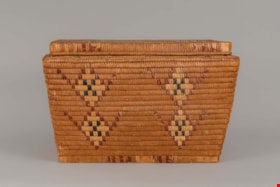
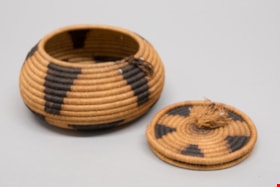
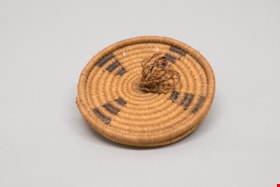
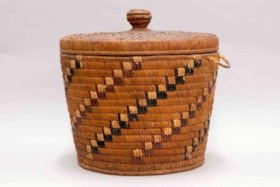
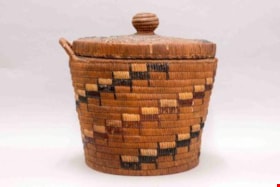
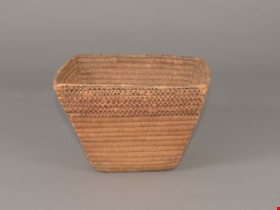
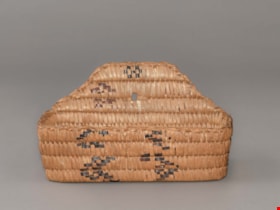
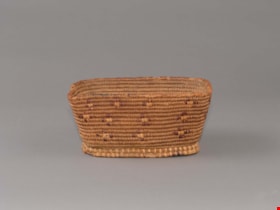
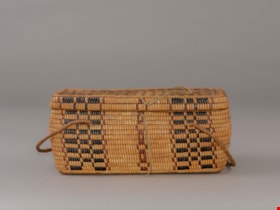
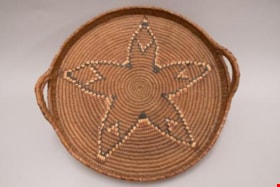
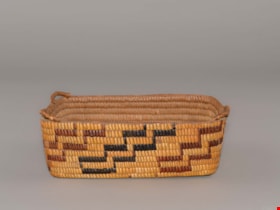


![Interview with Josephine Chow by Denise Fong February 7, 2020, [1900-2020] (interview content), interviewed Feb. 7, 2020 thumbnail](/media/hpo/_Data/_BVM_Images/2017/2017_0036_0004_001.jpg?width=280)